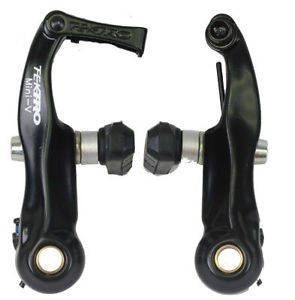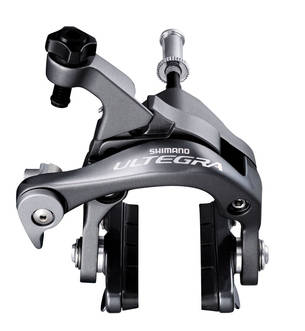Equipping your bicycle with the correct kind of brakes is an integral part of the touring process. Not only will the correct brakes make your ride safer, you will have peace of mind knowing that your bike is capable of handling any terrain changes that you may encounter. Some of the most common brake options include:
We will examine all brakes options below:
1. Disc brakes:
Touring in rough terrains requires sturdy and hard-working brakes, particularly if you are riding down steep, wet slippery slopes. Whilst descending down mountain slopes, standard rim brakes will often become too hot from the friction and will melt, leaving you with little to no control of your speed or safety. Disc brakes are a much better alternative for riding across rougher terrain. Disc brakes have much better modulation, giving you more braking control as you make a descent. As they rotate around the caliper, disc brakes cool themselves down, eliminating the risk of becoming too hot and losing your ability to brake effectively whilst traveling downhill. To ensure your own safety, be sure to install disc brakes onto your bike before you begin a mountain bike tour. This should be done by a qualified bicycle mechanic or your local bike shop.
While disc brakes are an excellent alternative to standard rim brakes, they also have their faults. If you bend a rotor during your tour, disc brakes will begin to give resistance and squeak relentlessly. This is only a minor annoyance, however, listening to a persistent squeaking during your tour could become annoying for both you and your cycling companions. There is also the risk of disc brake failure, whether it be loss of hydraulic fluid from the caliper or a snapped cable and pad. It would be wise to carry spares whilst touring.
Used in the right setting, disc brakes can be extremely beneficial for a cyclist on tour.

2. V brakes:
Usually found on mountain bikes and hybrid bikes, V brakes are much easier to adjust compared to the traditional cantilever brakes. V brakes are suited to almost all biking conditions, with the exception of extreme descents and heavy rain. If such conditions are experienced, it would be advisable to change the brakes used on your touring bicycle, allowing your bike to be at optimal functionality. Riding in mud and rain can affect the operation of the V brake, giving you less stopping power. If you happen to break spokes or buckle a wheel whilst riding, it will have detrimental impacts on your V brakes.

3. Road brakes: The weakest of the three brake types, road brakes are suitable for standard cycling tours. However, if your cycling tour includes any steep descents, rough terrain or wet weather, these brakes would not be suitable for use. As they have weak stopping power, they would only be suitable for flat to undulating terrain. You also have a limited amount of cable stretch with a cable actuated brake, therefore, you must consider this when contemplating if you'd like to use road brakes.

